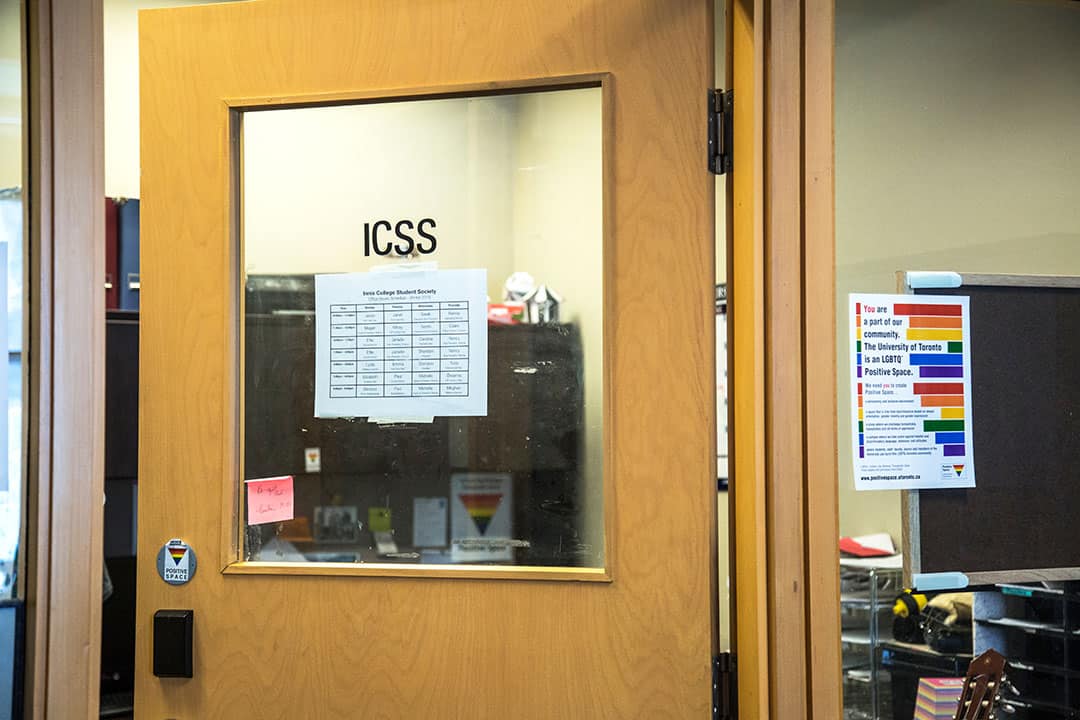Content warning: discussions of suicide.
On March 29, a Mental Health Reform Open Forum was hosted at Innis College in light of a student death by suicide earlier this month and the ongoing discussion on mental health issues at U of T.
First-year students Oliver Daniel, Annie Liu, Kathy Sun, and Jehan Vakharia hosted what is hoped to be the first of many consultations with students, staff, and faculty.
The forum was intended as “a safe open space to encourage suggestions and gather ideas” to address and improve mental health supports at Innis College and U of T as a whole.
Daniel told The Varsity that following recent student initiatives on mental health — including the silent protest at Simcoe Hall and the How Many Lives? campaign — the organizers “wanted to focus more on the Innis collegiate level because that was something that wasn’t being addressed.”
The main initiatives brought to the table include the instatement of a mental health director or commissioner within Innis College for the upcoming academic year and a joint letter to Executive Director of the Health & Wellness Centre Janine Robb demanding institutional change to U of T’s mental health system. Of the seven Arts & Science college student unions and councils, University College, Woodsworth College, and Victoria University are the only three with mental health or wellness commissions.
While discussion also encompassed universitywide infrastructure, students repeatedly returned to the lack of available and accessible resources both on and off-campus.
While the university often directs students to a set of external resources, a number of students at the forum noted that Good2Talk, a helpline for postsecondary students, is often highlighted but also often overloaded. This culminated in a resounding call from students for on-campus crisis supports. Campus councillors, Vakharia noted, would also be more familiar with issues specific to U of T.
At the Health & Wellness Centre, students are said to have months-long wait times for appointments, with sessions for anxiety coping and cognitive behavioural therapy only accessible with a prescription from a Health & Wellness doctor.
The structure of Accessibility Services was also discussed, and its inconveniences were succinctly summarized by University College Mental Wellness Commissioner and guest speaker Kiana Habibagahi, who noted that “accessibility is inaccessible.”
Attention was also drawn to the sensitivity and intersectionality of supports by and for students, staff, and faculty. The topic was brought up following conversations about introducing student-run peer support networks at Innis College to provide students in precarious situations with immediate, on-the-ground assistance.
Accounting for these concerns, the organizers noted that a conscious effort would be made to form a representative volunteer base, paying mind to gender, cultural experiences, and international versus domestic student backgrounds.
The organizers also foresee volunteers receiving training similar to that of dons, which includes safeTALK for suicide prevention, as well as training on self-awareness to recognize when they are unable to provide adequate support by themselves.
Habibagahi cautioned that, because the student commission is “not trained,” it should act first and foremost as a “resource guide” and not as a “resource.”
In response to a student’s suggestion to mandate mental health training at Innis College, Dean of Students Steve Masse agreed that such training is important. Job training for occupational hazards and physical disabilities is already instituted at the college and across U of T, as it is legislated by the provincial government.
According to Masse, while there are employees with varying degrees of training — from safeTALK suicide prevention workshops to professional certifications — the university should strive to train as many people as possible.
Closing the discussion, Daniel presented the question, “Who is responsible for making sure that students are well?” Whereas one student referred to President Meric Gertler’s recent letter asserting that the administration is “strongly committed to collaborating,” others pointed out that responsibility lies with all members of the U of T community. Liu emphasized the need for “some resources at every level,” as individual concerns are best addressed by those involved in each specific area. Since the power ultimately lies with those at the top because they control the funding, Vakharia asserted that the administration needs to do more in order for students, staff, and faculty to follow suit.
Also in attendance was mental health advocate William Nesbitt, who expressed deep concern that there is a “perception around U of T that you guys are okay… and that’s not okay.”
Expressing his support for the organizers’ initiative, he suggested building a resource base and hosting seminars that allow students to participate voluntarily, anonymously, and as actively or passively as they desire. He also reminds students to maintain a partnership with the administration and not take an adversarial stance.
Let them know, he said, “that you won’t go away.”
If you or someone you know is in distress, you can call:
- Canada Suicide Prevention Service phone available 24/7 at 1-833-456-4566
- Good 2 Talk Student Helpline at 1-866-925-5454
- Ontario Mental Health Helpline at 1-866-531-2600
- Gerstein Centre Crisis Line at 416-929-5200
- U of T Health & Wellness Centre at 416-978-8030.
Warning signs of suicide include:
- Talking about wanting to die
- Looking for a way to kill oneself
- Talking about feeling hopeless or having no purpose
- Talking about feeling trapped or being in unbearable pain
- Talking about being a burden to others
- Increasing use of alcohol or drugs
- Acting anxious, agitated, or recklessly
- Sleeping too little or too much
- Withdrawing or feeling isolated
- Showing rage or talking about seeking revenge
- Displaying extreme mood swings
The more of these signs a person shows, the greater the risk. If you suspect someone you know may be contemplating suicide, you should talk to them, according to the Canadian Association for Suicide Prevention.


